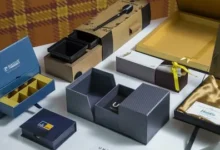Eco-Friendly Infrastructure: The Role of FRP Gratings in Green Projects

As India works towards its sustainable development goals, the need for green materials for infrastructure is on the rise. Everything, from smart cities to renewable energy plants, is undergoing a reevaluation of its construction for environmental impact. One such unsung hero in this green revolution is FRP (Fibre Reinforced Plastic) gratings—an alternative to the traditional metal and concrete floor decking systems. FRP Gratings India are lightweight, corrosion-resistant, and highly durable.
Why are FRP Gratings Eco-Friendly?
FRP Gratings possess a unique and highly desirable combination of ribbed composite materials. These are manufactured with resin and reinforced with fiberglass, yielding composite materials with a remarkable strength-to-weight ratio and durability. What is remarkable about FRP Gratings in green infrastructure projects is their overall lifecycle and low environmental impact.
Reduced Energy Consumption: FRP production has a far lower energy burden than the production of aluminum and steel.
Corrosion Resistance: Chemicals need not undergo frequent replacements or coatings, which lessens upkeep emissions.
Recyclability: Goals towards the circular economy are advanced as numerous FRP products are recyclable or can have secondary uses.
Lightweight Design: Although often overlooked, FRP Gratings’ lightweight construction simplifies processes such as fuel, labor, transportation, and installation, making them easier, which saves fuel and labor expenses.
Use of FRP Gratings in Sustainable Projects
FRP gratings are now used in more areas where sustainability matters. Below are some of the applications:
- Waste Sewage Treatment Plants
FRP gratings are best suited for the walkways, platforms, and levels in the sewage and effluent treatment plants. Their enduring cleanliness and longevity makes FRP gratings the best option for sewage areas where moisture, chemicals, and microbes are present.
- Wind and Solar Energy Installations
FRP gratings serve as access platforms, cable trench covers, and maintenance walkways in renewable energy plants. Their lightweight structure allows for easy remote area installations, and their non-conductive nature adds safety where electricity is present.
- Green Buildings and LEED Projects
FRP gratings are often used in walkways, ventilation platforms and covers, and drainage for windows and roofs of green buildings and LEED projects. Their attached aesthetics, little required upkeep, and flexibility serve builders/leaders striving for sustainability.
- Coastal and Marine Infrastructure
FRP gratings serve as jetties, docks, and offshore platforms, providing a sustainable solution for structures. They also combat the major issue of saltwater corrosion, offering a lower maintenance solution than frequent, toxic, corrosive replacements.
FRP Gratings in India’s Push for Eco-Friendly Development
With the start of the Smart Cities Mission, the “Swachh Bharat” Abiyan, and the Gati Shakti, India is going through an infrastructure shift, and the focus is on the FRP gratings as they are becoming increasingly popular in the:
Metro and railway stations for the drainage and ventilation platforms.
Public sanitation facilities and restrooms where hygiene and sanitation FRP requirements are strict.
Eco-tourism zones for walkways, observation decks, and bridges.
FRP Gratings India manufactures are stepping up to provide the rest of the world with tailored FRP solutions that meet environmental and structural goals. Having policies supporting India’s greentech along with increased awareness, FRP gratings are going to be one of the most sought-after products in construction.
FRP Gratings vs. Steel Gratings
When it comes to long-term, FRP gratings have the most edge against steel gratings. Steel is heavy and prone to corrosion, making FRP – which is lightweight and naturally rust, chemical, and moisture resistant – an easily maintained solution. Since maintenance and upkeep are greatly reduced, FRP doesn’t require frequent painting or anti-corrosion treatments, making it a maintenance cost-friendly solution. Because it doesn’t have these requirements, FRP installation is easier and faster. This also means that during transport and setup, labour and fuel expenses are greatly reduced.
Steel supports have a lot of advantages, like being super strong plus offering great durability. However, their usage is very taxing in terms of maintenance, and they do lack effectiveness in very harsh regions like coastal zones or chemical plants. Moreover, steel supports consume a lot of energy, emitting a lot of carbon in the process. This makes them unfit for green infrastructure projects.
FRP Gratings vs. Concrete Platforms
Once again, FRP gratings show their superiority when placed in comparison with concrete in terms of eco-friendliness. Concrete is overly weighty, and the need for curing time makes it a resource geyser. It needs a lot of time and processing resources, which increases the overall project time. Furthermore, it is prone to water damage and cracking over time in high-moisture and corrosive environments.
FRP, on the other hand, comes pre-fabricated and is simple to install, which makes the processing time a lot shorter. Additionally, it is very durable and does not require a seal or waterproofing. FRP’s non-porous surfaces bolster resistance to microbial growth, which makes it great for wastewater treatment or other sanitation centers. It also comes in a wide array of customizable colors and patterns, which concrete simply cannot offer.
Bottom line
If you’re working as a builder, architect, or industrial planner, then including FRP Gratings India products in your upcoming project can align your imagination with what Mother Nature demands.










